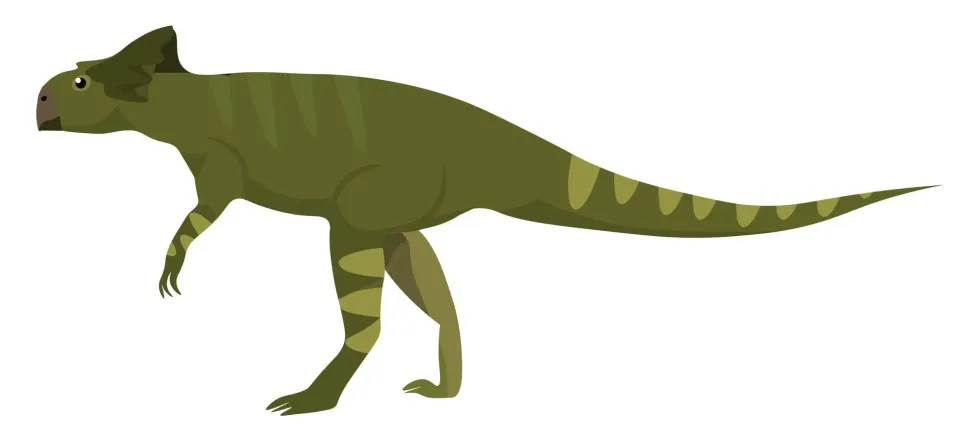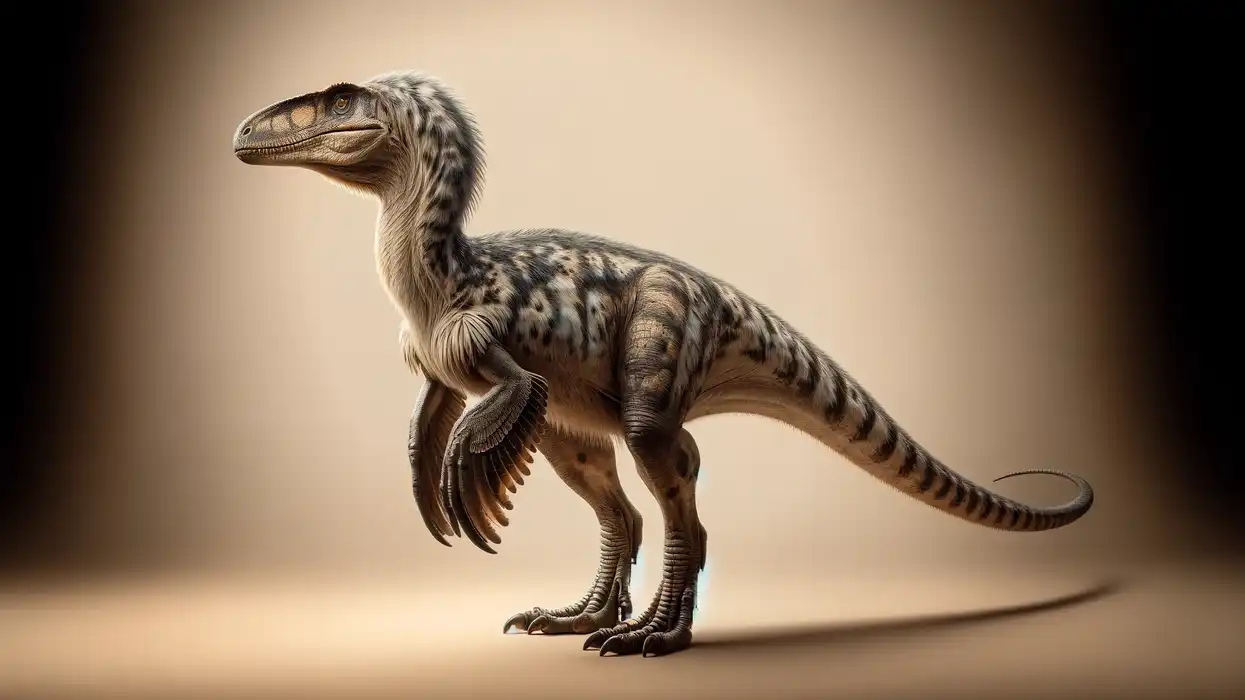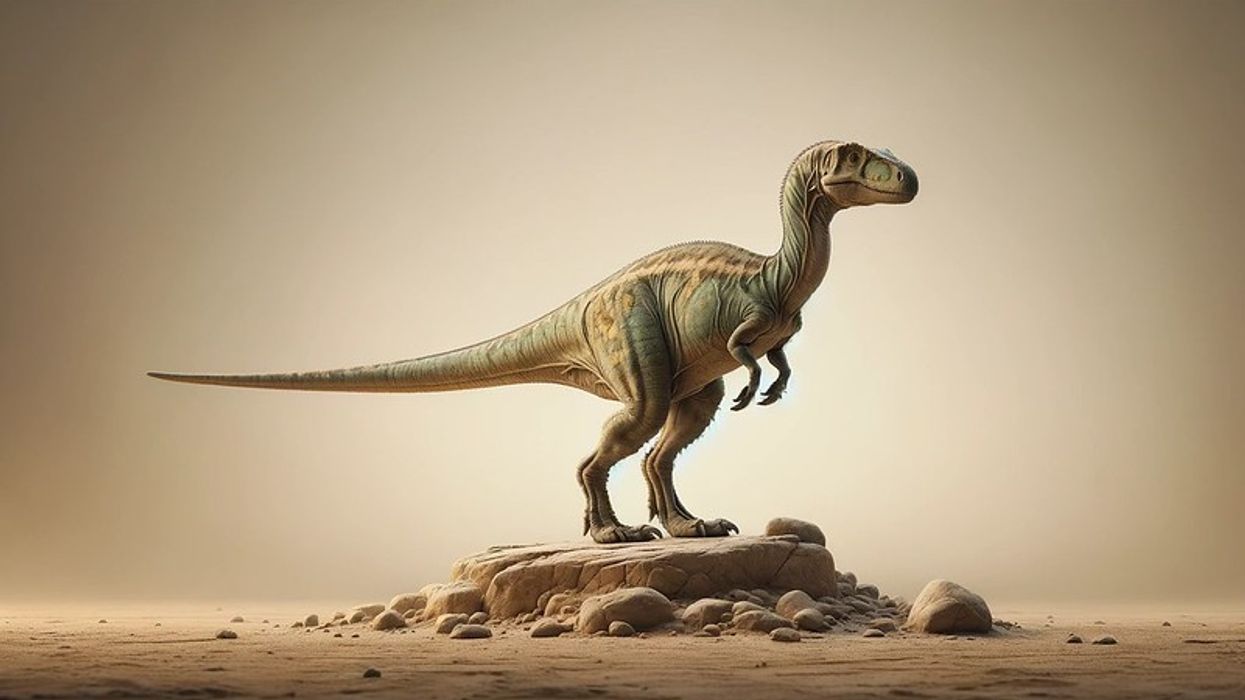Microceratus is a genus of small-sized dinosaurs within the suborder Ceratopsia. This dinosaur group occupied present-day Asia in the Late Cretaceous period around 90 million years ago.
This species was a bipedal (walked on two legs) dinosaur with short arms, a sharp beak-like mouth, and a distinct ceratopsian frill. This was one of the first groups of Ceratopsians (horned dinosaurs-Ancient Greek) in Mongolia along with Psittacosaurus.
Bohlin first described Microceratops gobiensis as the type specimen in 1953, and the second species, Microceratus sulcidens, might be of Asiaceratops. This common term Microceratops was already in use for an Ichneumon wasp.
So, later in 2008 Mateus introduced Microceratus as a replacement for already in use term, Microceratops. The term Microceratus means 'small-horned.'
Dinosaurs of the Ceratopsia group were spread across Asia, Europe, and North America. Many researchers within the scientific community believe that these species could change the color of their bodies to blend into their surroundings.
Microceratus dinosaurs measured up to 3 ft (0.9 m) in length, 1.5 ft (0.45 m) in height, and weighed only around 4 lb (1.8 kg). This species is defined within Neoceratopsia infraorder and this clade consists of dinosaurs that are more derived species than Psittacosaurus.
If you loved reading these facts about the Microceratus group then make sure to check out some amazing facts about the Homalocephale and Metriorhynchus on Kidadl.
Microceratus Interesting Facts
How do you pronounce 'Microceratus'?
The pronunciation of Microceratus (small-horned face) is 'Mike-row-ker-ha-tus.'
What type of dinosaur was a Microceratus?
Microceratus (Mateus, 2008) is a small dinosaur with a frill on its head that walked on two legs within the order Ornithischia and phylum Chordata. This small-horned dinosaur was the smallest of the Jurassic dinosaurs within the Ceratopsia classification that is only 4 lb (1.8 kg) in weight.
Even though a replacement classification for the already-in-use Microceratops (wasp) was provided, a lot of Microceratus skeletal material was being reassigned to Graciliceratops. Also, Microceratops sulcidens (Bohlin, 1953) was renamed as Asiaceratops sulcidens.
There are only limited fossils of Microceratus (Microceratops) due to which there is only a little information about this dinosaur. Many researchers in the paleontology community believe that this small creature of the world was able to change color to camouflage though the complete appearance is not known.
Also, in Michael Crichton's 'Jurassic Park,' Microceratus (Microceratops) would alert people whenever Tyrannosaurus Rex was around. Within the scientific community, these ceratopsians are known as nomen dubium.
The only fossil that was found was of young renamed Microceratus. It is not known whether these creatures were social.
In which geological period did the Microceratus roam the earth?
The fossil remains of these ceratopsians (horned-face) date back to the Late Cretaceous period around 99 million years ago.
When did the Microceratus become extinct?
These ceratopsian dinosaurs of the Cretaceous became extinct in a mass extinction event around 66 million years ago.
Where did a Microceratus live?
Microceratops gobiensis (type specimen) lived across Asia. Their remains were first discovered in Mongolia's Gobi desert. These dinosaurs were one first to be discovered along with Psittacosaurus.
What was a Microceratus's habitat?
These Microceratus ceratopsians lived across terrestrial woodland habitats.
Who did a Microceratus live with?
It is not known whether these creatures were social or not. However, like other dinosaurs, these too might have lived and died in groups.
How long did a Microceratus live?
The maximum or average lifespan of these dinosaurs of the genus Microceratus is not known.
How did they reproduce?
The reproduction of the Microceratus (Mateus, 2008) species was oviparous like other related dinosaurs. However, the research on the breeding process, incubation period, and parental care is not known.
Microceratus Fun Facts
What did a Microceratus look like?

This ceratopsian, Microceratus (previous name, Microceratops) was a small dinosaur that walked on two legs with a weight of only about 4 lb (1.8 kg). Microceratus had a sharp beak instead of teeth and a small neck frill from the back of its head.
The beak was sharp enough to bite off needles or leaves as per the Big Book of Dinosaurs. Many researchers within the scientific community believe that these horned face dinosaurs could change their body colors.
How many bones did a Microceratus have?
The exact number of bones in the skeleton of Microceratus (previous name, Microceratops) is not known. Microceratus fossils that were recovered are limited and were of a young dinosaur.
How did they communicate?
The mode of communication of these species in history is not known. However, they might have communicated using body language, calls, and songs. It is also noted that the frill on the back of their head was used for display and defense
How big was a Microceratus?
Microceratus size range was around 3 ft (0.9 m) in length and 1.5 ft (0.45 m) in height. The Yinlong species was a little longer than these species at around 3.9 ft (1.2 m).
How fast could a Microceratus move?
The research on the exact running speed of the Microceratus (previous name, Microceratops) in history is not known. However, these small dinosaurs were agile and fast running.
How much did a Microceratus weigh?
The weight range of Microceratus (previously Microceratops) is around 4 lb (1.8 kg). Their weight is almost equal to the weight of a small dog, like a Yorkshire terrier.
What were the male and female names of the species?
There is no specific name given to either female or male Microceratus dinosaurs.
What would you call a baby Microceratus?
There is no particular name given to the baby Microceratus.
What did they eat?
The diet of Microceratus dinosaurs was herbivorous. These herbivorous dinosaurs had leaves and plants in their diet. They might have made use of their sharp beak to cut through needles and leaves. Also, during their time period, the flowering plants were limited geographically so, they might have fed on cycads, conifers, and ferns present in that time period.
How aggressive were they?
It is not known how aggressive these Microceratus creatures were. As they were not primarily carnivores, it was led to explore that they would have shown aggression for food and territory.
Did you know...
These species were included in movies like Jurassic World and Jurassic Park. It is mentioned in Michael Crichton's 'Jurassic park' that these creatures spent most of their time on trees. However, this theory is not proved by the scientific community.
Microceratus vs Triceratops: Triceratops translates to 'three-horned face' and Microceratus translates to 'small-horned fac.' Microceratus were alive around 99 million years ago and Triceratops were alive around 68-66 million years ago.
Microceratus were around 3 ft (0.91 m) in length and Triceratops were almost three times the length of Microceratus around 26-30 ft (7.9-9 m). Also, Microceratus were the height of Triceratops, which were around 9.5-9.8 ft (2.9-3 m) tall.
There were several fossilized bones that were of Triceratops found whereas there are only limited skeletal remains collected that belonged to Microceratus. Also, the triceratops dinosaurs are well-known creatures among the general public.
Ceratopsia species lived around 161-66 million years ago. Othniel Charles Marsh came up with this name in 1890 to classify species that have teeth with two roots, fused neck vertebrae, horns, rostral bone, and a forward-oriented pubis. The most common dinosaurs in Mongolian sediments are Protoceraptos and Psittacosaurus.
What's the prey of the Microceratus?
There are no preys of Microceratus (previously Microceratops) as these species are herbivores. They are instead preyed upon by Troodonts and Dromaeosaurs. In Michael Crichton's 'Jurassic park' it is mentioned that these species were detectors of large predators.
Are Microceratus carnivores and did they hunt in packs or individually?
No, Microceratus (previously Microceratops) were not carnivores and also did not hunt in packs. These creatures were herbivores and fed on plants and leaves.
Here at Kidadl, we have carefully created lots of interesting family-friendly dinosaur facts for everyone to discover! For more relatable content, check out these Caviramus facts and Prosaurolophus facts for kids.
You can even occupy yourself at home by coloring in one of our free printable Microceratus coloring pages.









